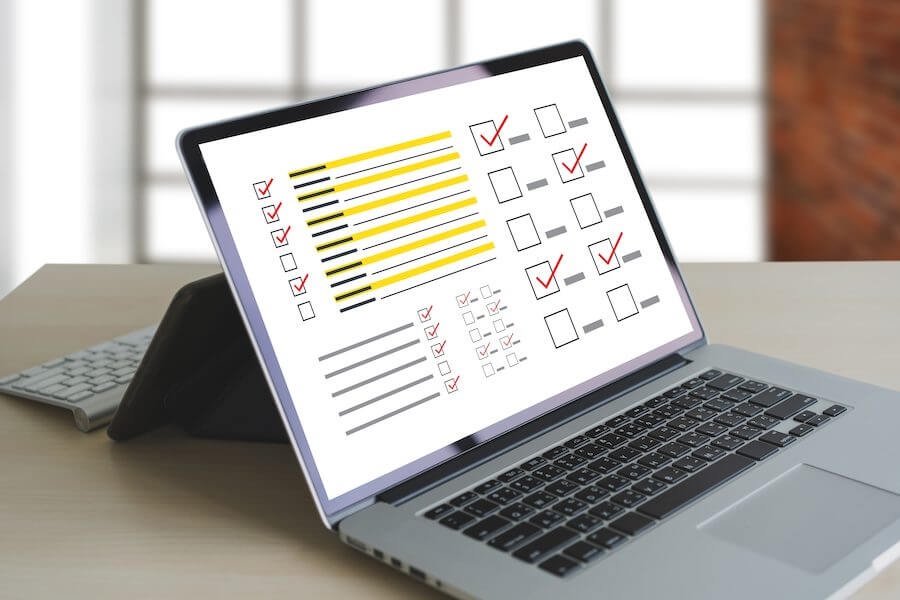Root cause analysis, shortened as RCA, is a problem-solving technique used to identify the core origin of a problem or event, such as an accident or failure.
Information collected is used to formulate an action plan aimed at preventing the same problem from recurring. This approach requires extensive investigations that assess underlying root cause(s) and not just the symptoms.
RCA is a process improvement approach that combines multiple tools and techniques, such as fishbone diagrams, 5 whys, graphs, and Excel, to find the cause(s) of a specific problem. It is utilized in various industries, including manufacturing, healthcare, aviation, information technology, engineering, marketing, etc. A template can be used to conduct this analysis.
This article will define a template for root cause analysis and educate you on its fundamental components. It also highlights the different types of templates available online and what factors to consider when customizing one.
What is a Root Cause Analysis Template?
A RCA template is a pre-designed fillable form with a standardized format to help you conduct a thorough RCA investigation on various problems.
It shows how to prevent an event from recurring, starting from problem identification, the timeline of events, and the analysis to formulating a corrective action and follow-up plan. This report can be customized to suit organizational practices and needs, thus enabling you to conduct standardized, efficient, effective, and compliant RCA consistently. This results in more effective solutions that prevent problems from reoccurring. The common formats of online templates are Word documents, Excel, or PowerPoint.
Key Components of an RCA Template
Each component of the template for an RCA represents a key item in the investigation process. The components are designed such that if determined, you can find a suitable corrective action plan for the incident at the end of the analysis.
Each element, therefore, serves a distinct but equally important purpose, as discussed below:
Problem description
This component is added to the template to identify and define the event, incident, or failure to be investigated. This section should capture descriptive information such as the nature of the problem, location, date, and a brief context outlining who reported the accident and how it impacted other operations.
You should define the problem before you can start to investigate the whys. When you define the problem clearly, everyone involved in the investigation understands the problem better and is thus on the same page.
Timeline of events
A timeline allows you to understand the sequence in which the events unfolded until the problem was manifested in the system or process. The template should have a section to document the list of events that occurred before, during, and after the accident. Each event must have a start date and duration. This way, you can identify any patterns or trends of occurrences that can be traced to the root cause(s).
Root cause analysis
The template should have a section that enables you to identify the whys and the underlying cause(s) of the problem. This section is used to outline any questions that can help identify the root cause(s). It should contain the structured format to be used in the analysis, whether it is a Fishbone diagram or a Pareto chart. Identifying the root cause(s) may require interviewing, brainstorming, benchmarking, experiments, and collaboration with team members.
Corrective actions
After identifying the specific origin of the issue in the system or process, you must formulate a solution to correct the defect. A section should be added to the template to document this information. The solution ought to be in the form of action items. The actions must be effective, practical, and targeted/specific to the root cause(s). This may require you to employ technical skills and critical thinking depending on the nature of the problem. Each solution should include the team members responsible for implanting it and an expected completion date.
Follow-up plan
The template must also have a section to record the procedure or framework for monitoring the efficacy of the determined corrective actions and modifying them when necessary. Each follow-up plan must have a timeline for the review and modification procedures. Lastly, the template must have a section to document the findings of the follow-up review. The follow-up plan should outline the outcomes and means to validate their success.
Each component of the template has benefits for the analysis. The problem description provides focus and clarity for the investigation team. A well-defined timeline clarifies how the events unfolded, starting from the symptoms to the root cause. The root cause offers you a foundation for developing corrective actions. The solutions ensure incidents or accidents from reoccurring. A follow-up provides a means for evaluating the effectiveness of the solution(s) and adjusting them if necessary.
Free Templates
Sometimes, creating a template with either of the tools can be laborious and time-intensive. To avoid this, you can download these free templates to assist you in conducting a RCA effortlessly. These templates can be downloaded in different formats, including PDF, Word document, and Excel sheets. They are easy to use and can be customized to suit your preferences.
Given below are the RCA templates:
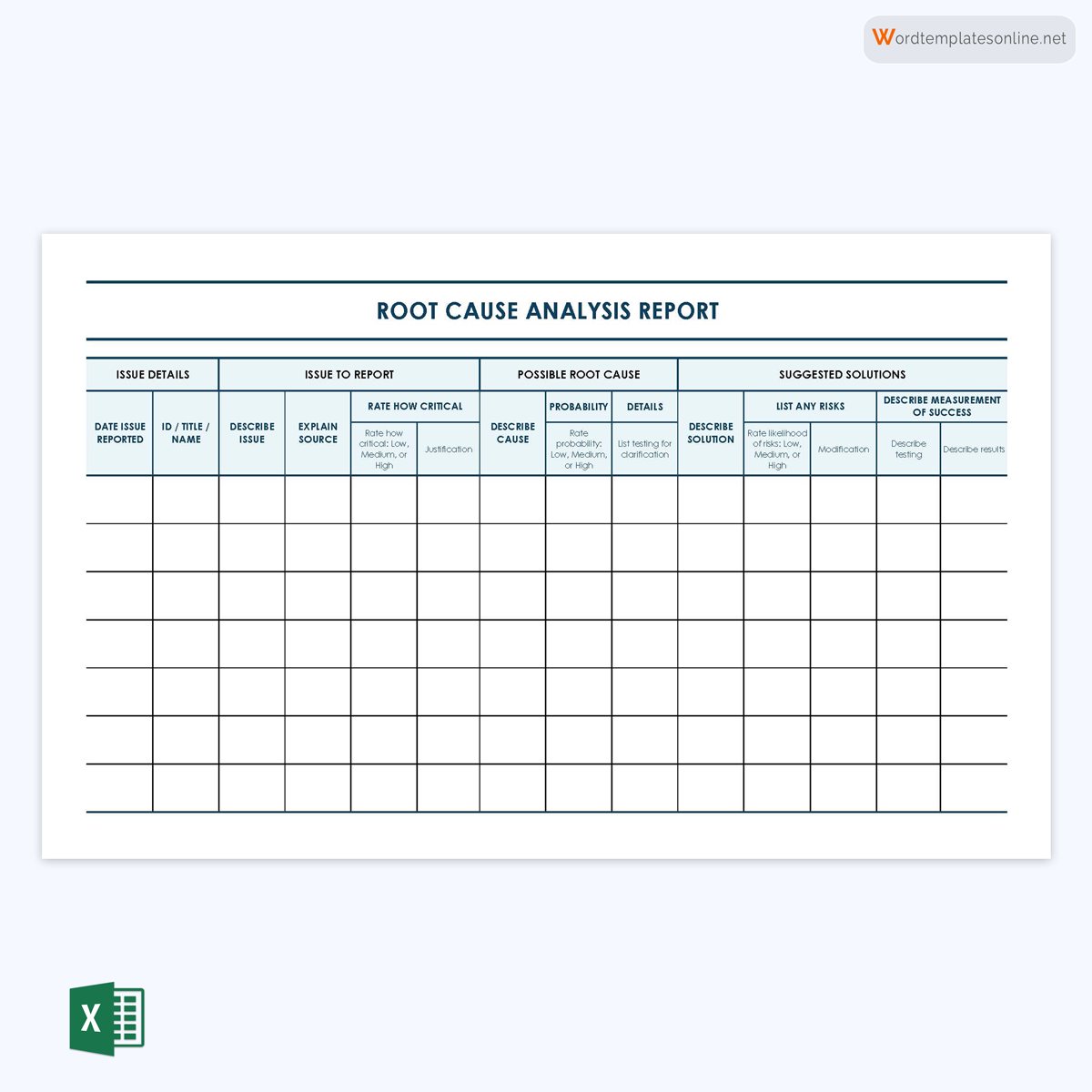
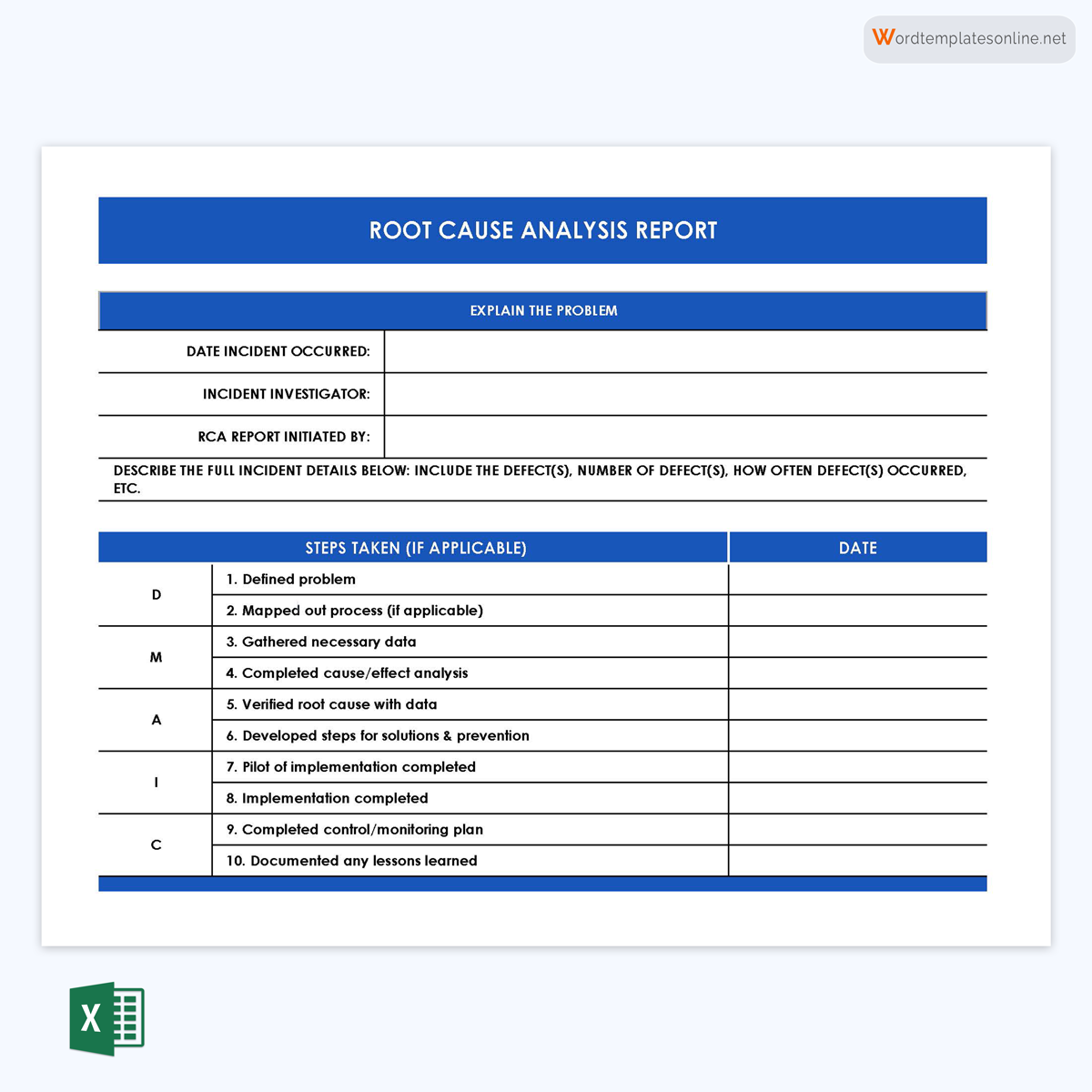

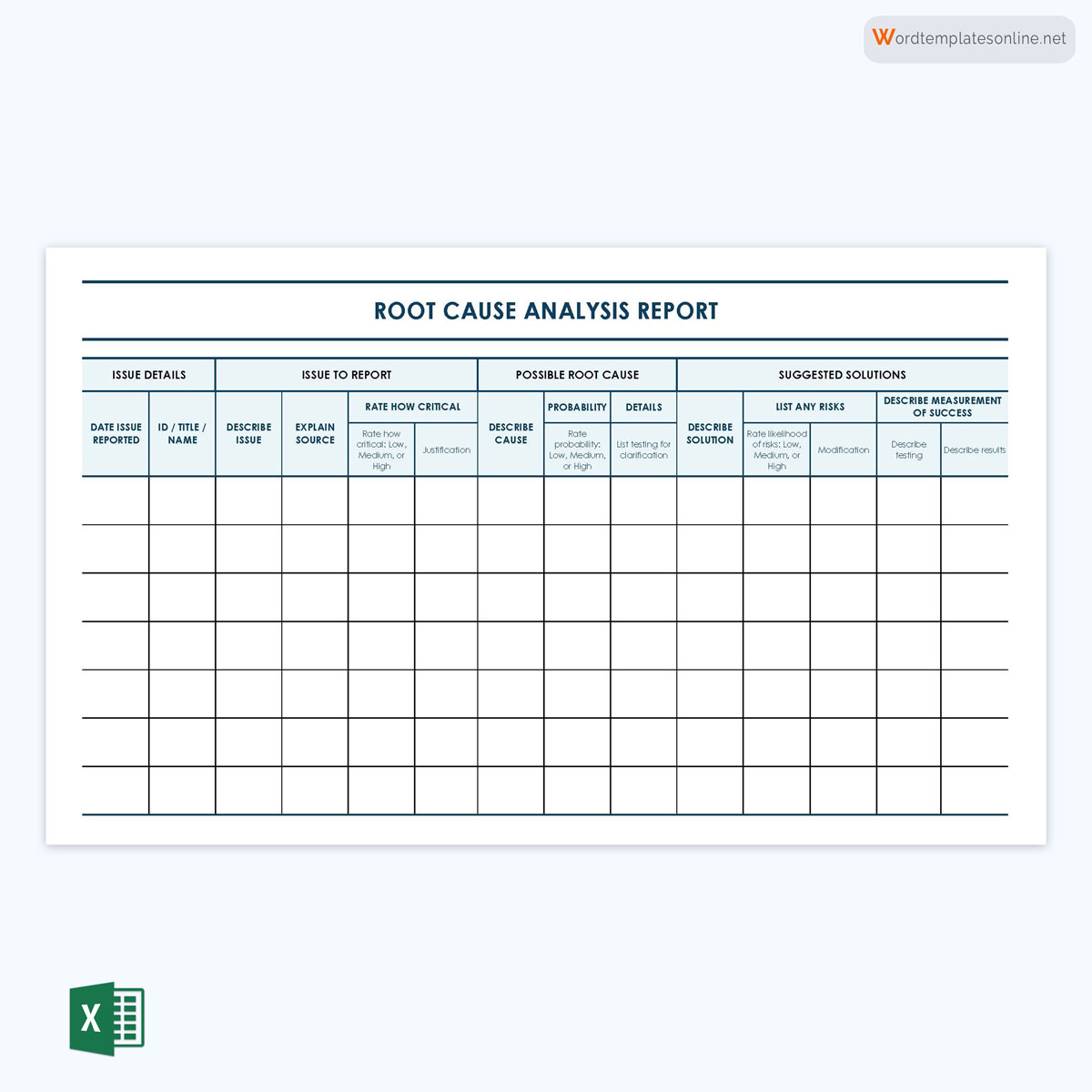
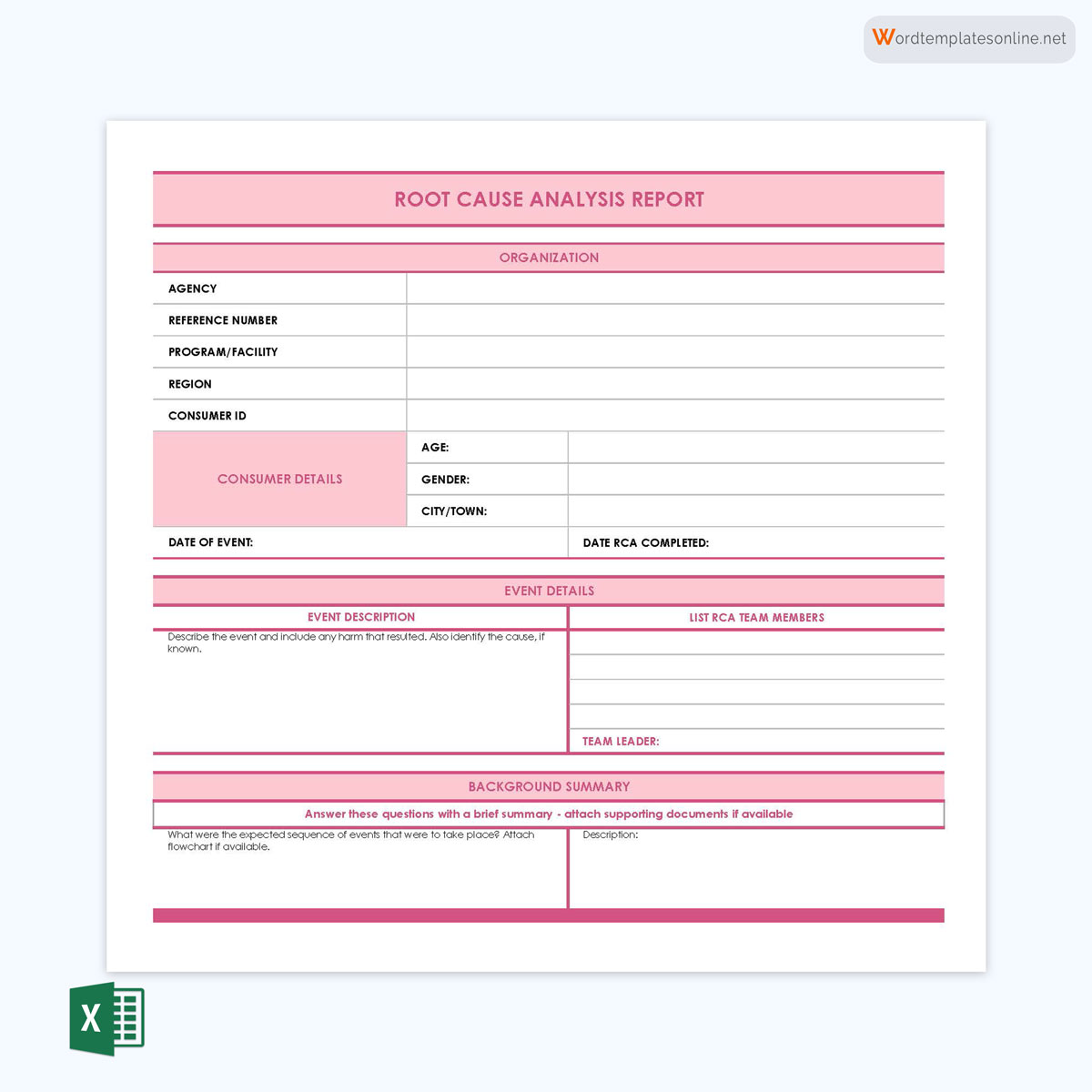
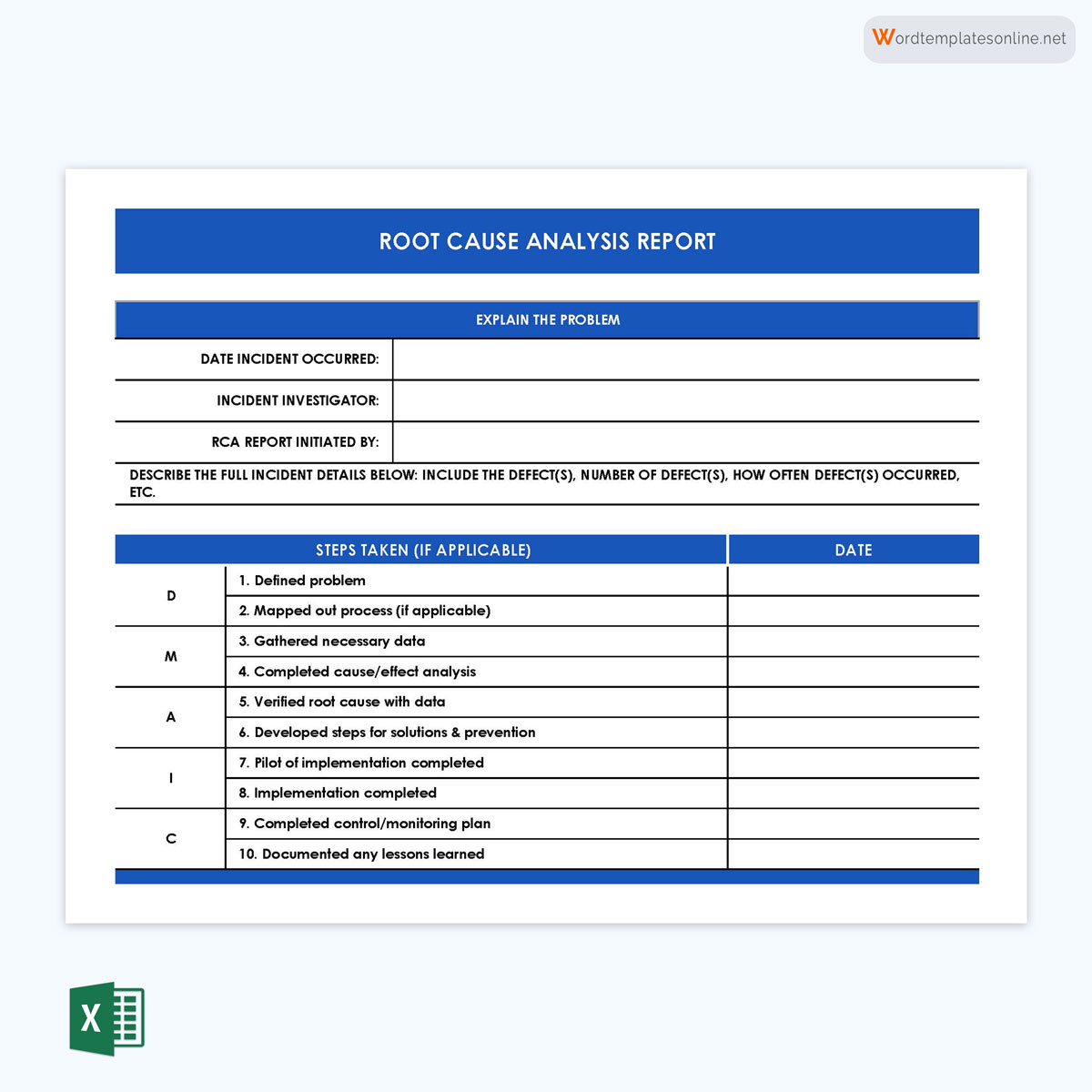
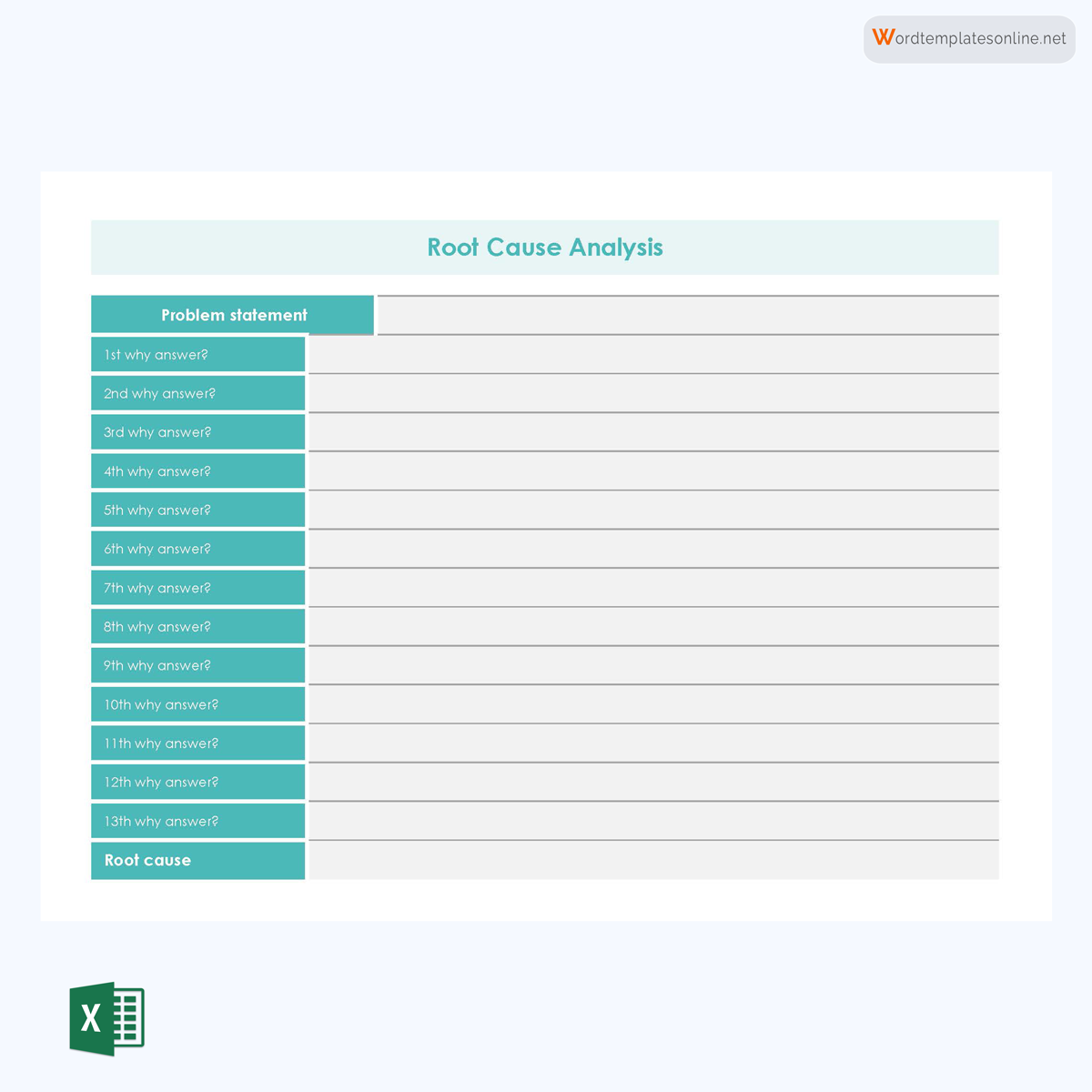
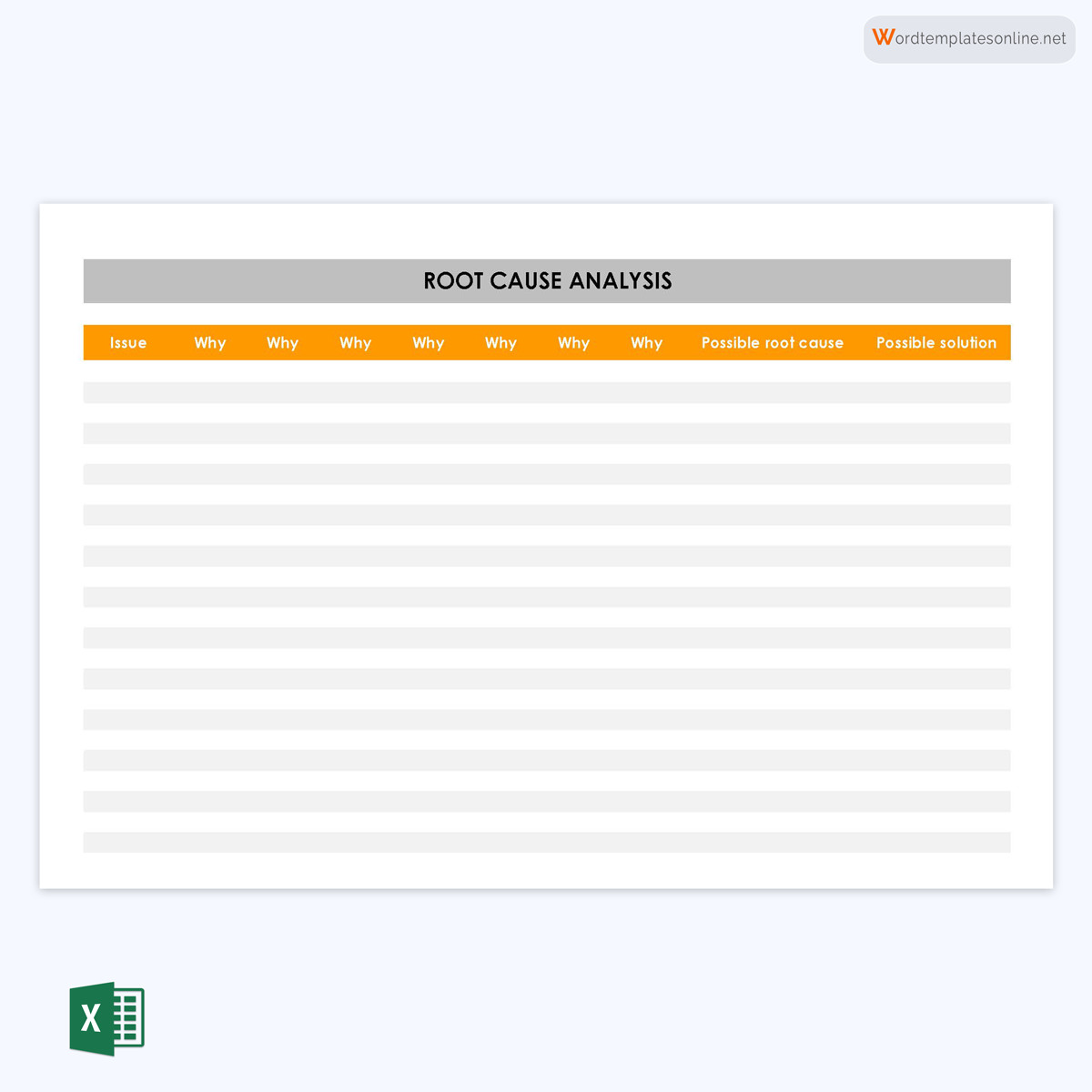
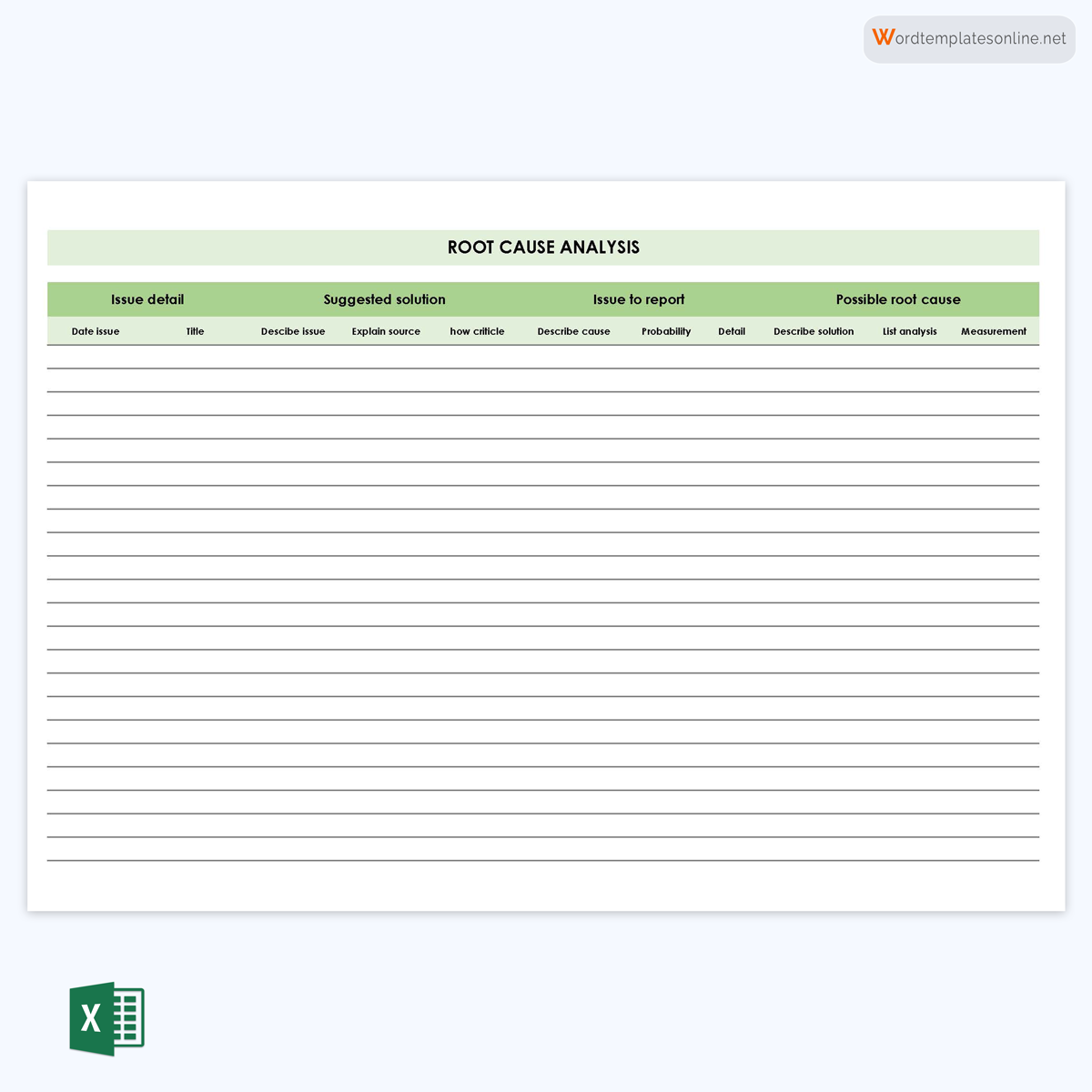
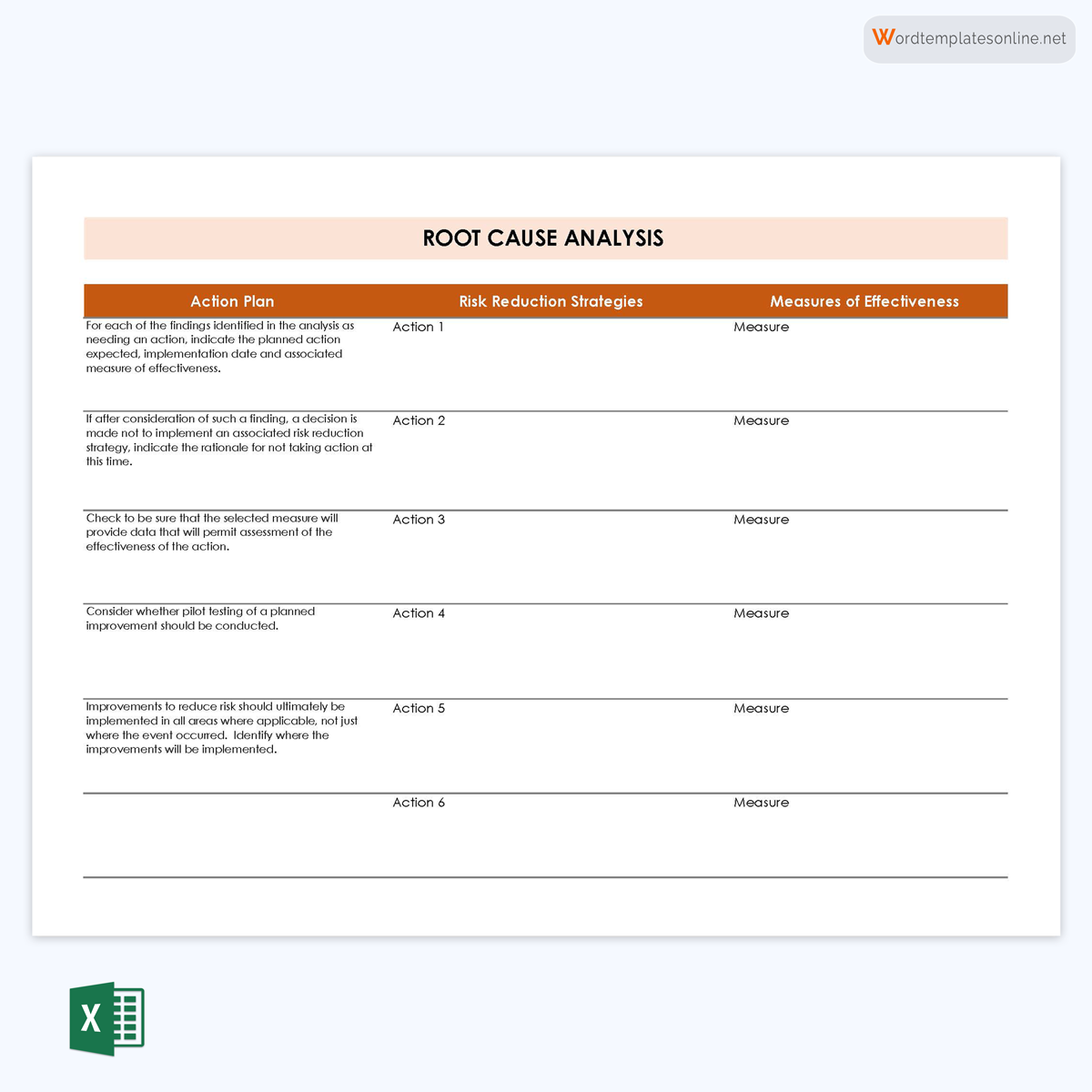
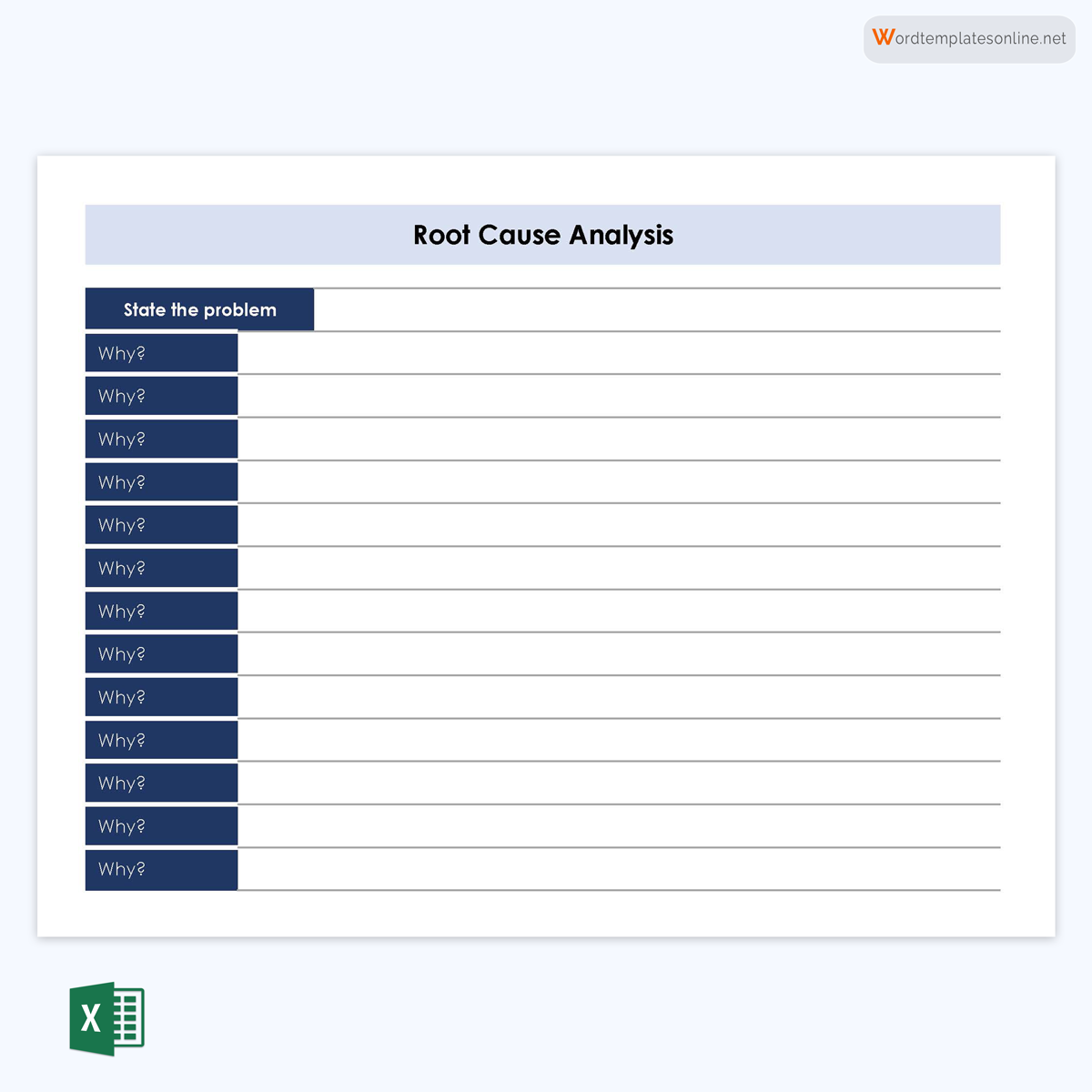
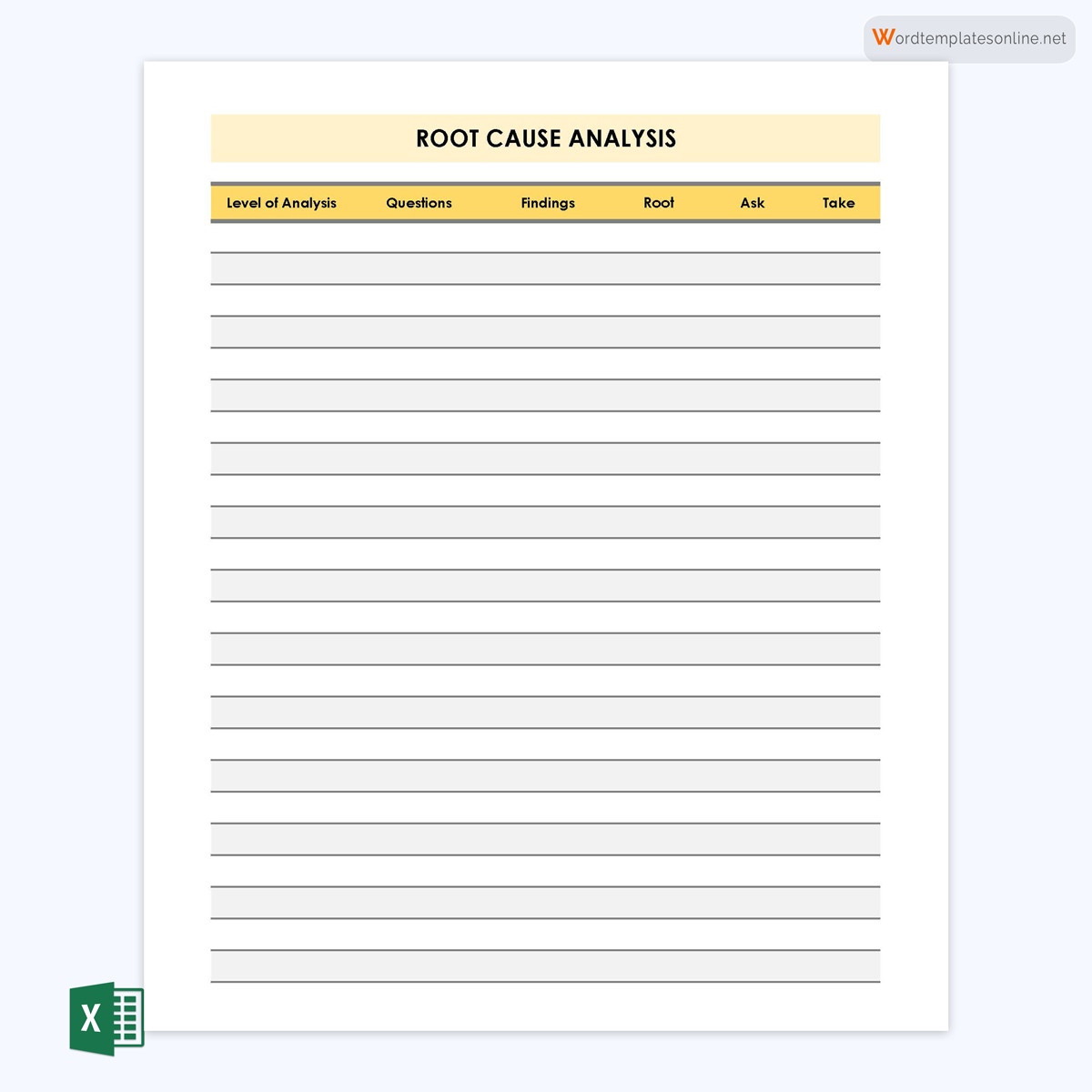
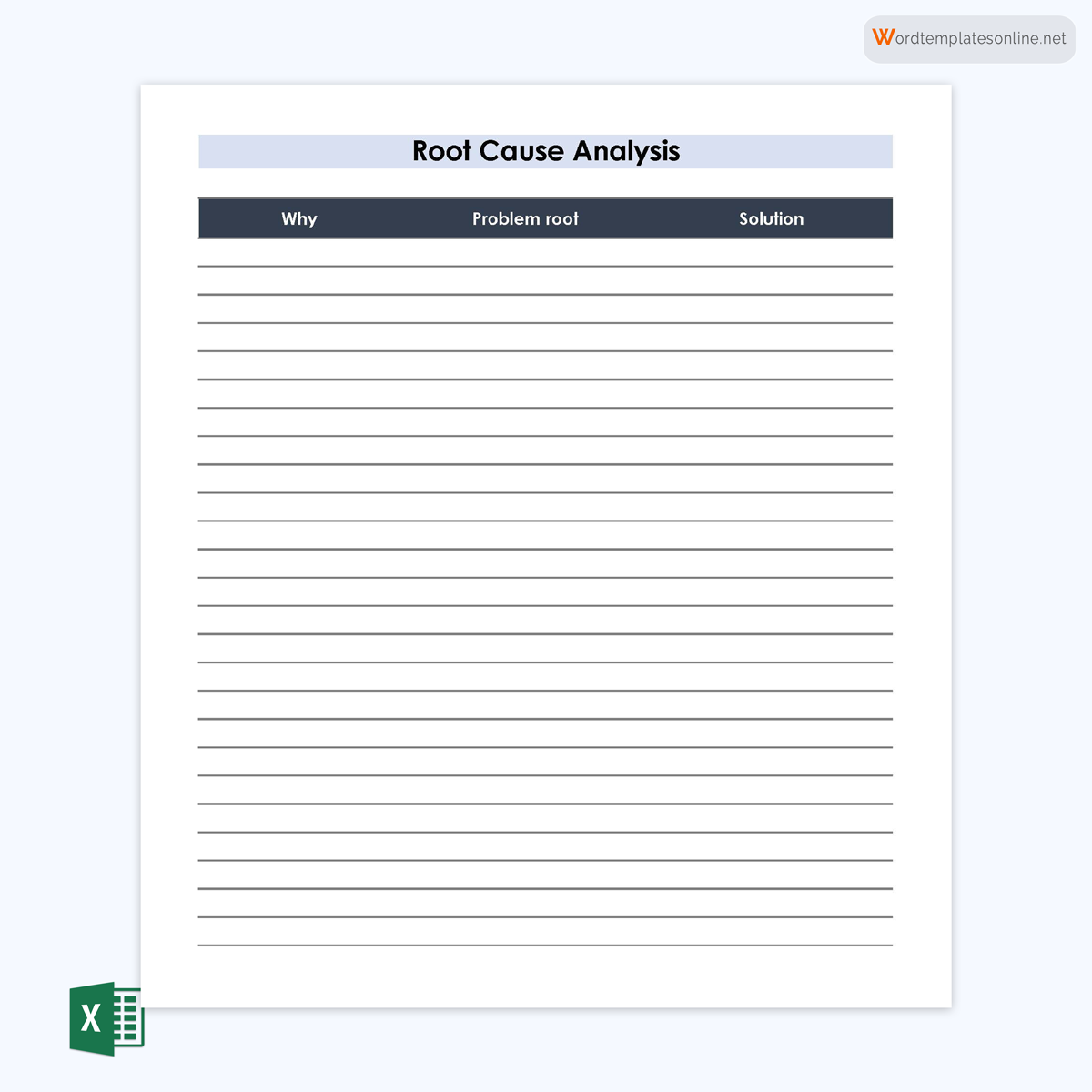
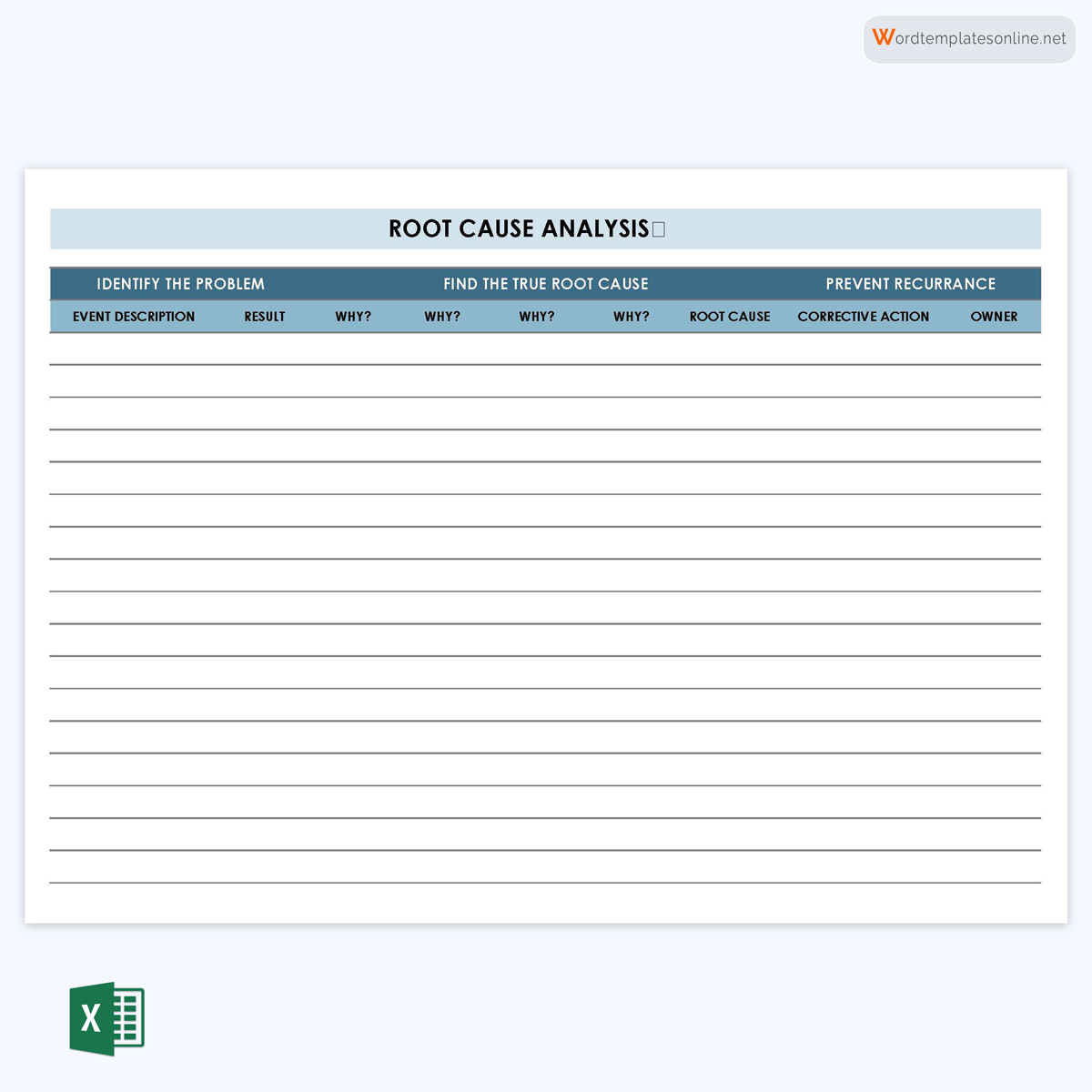
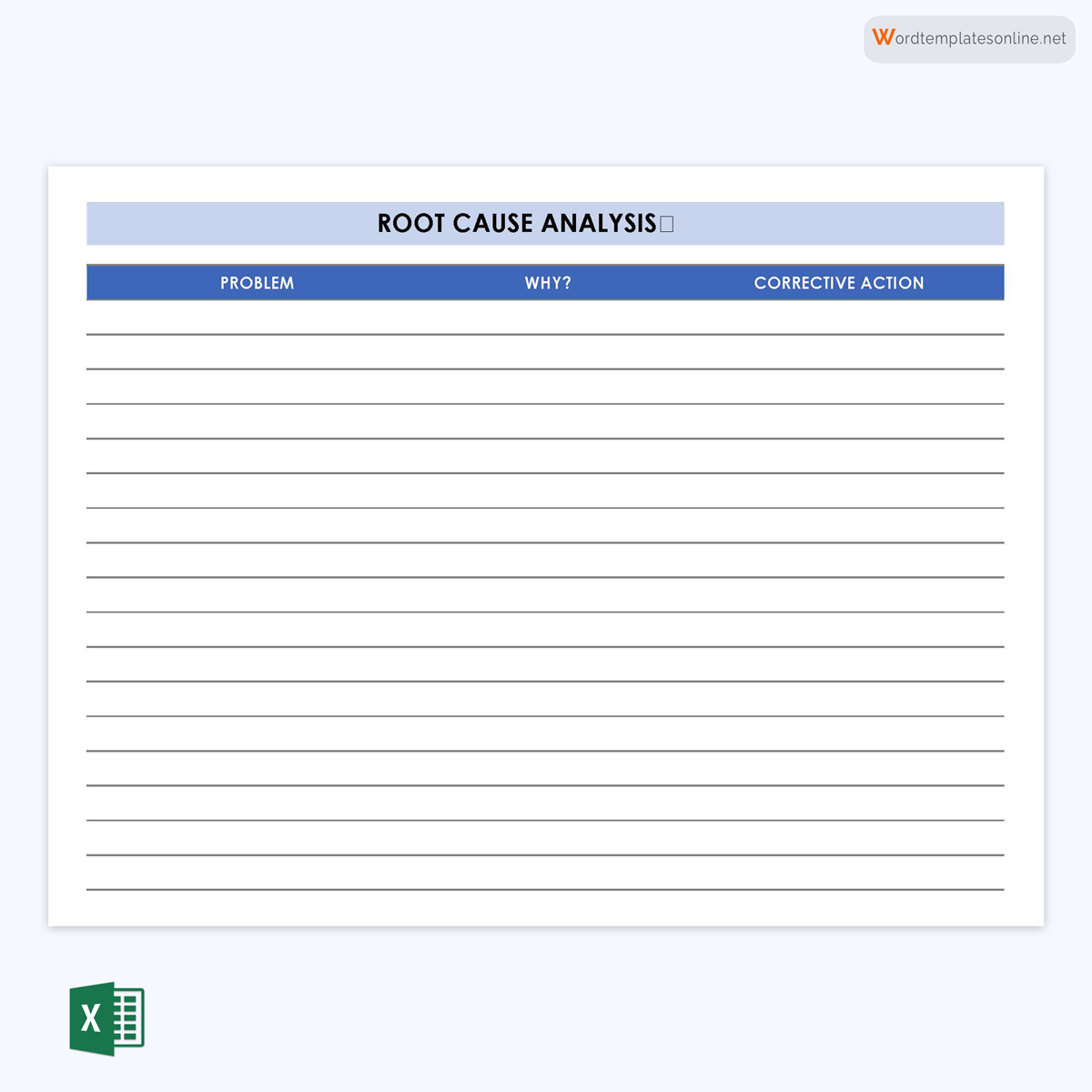
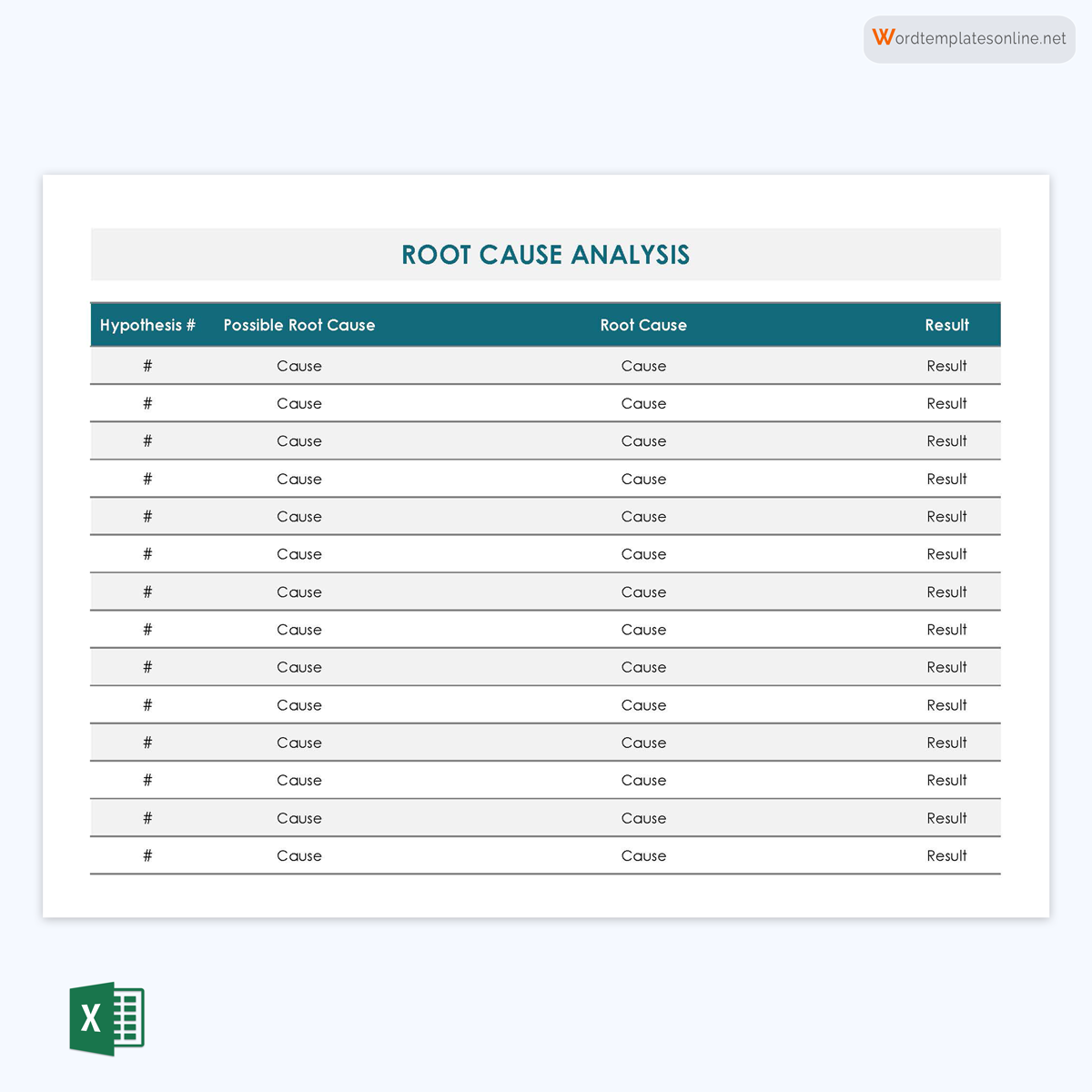
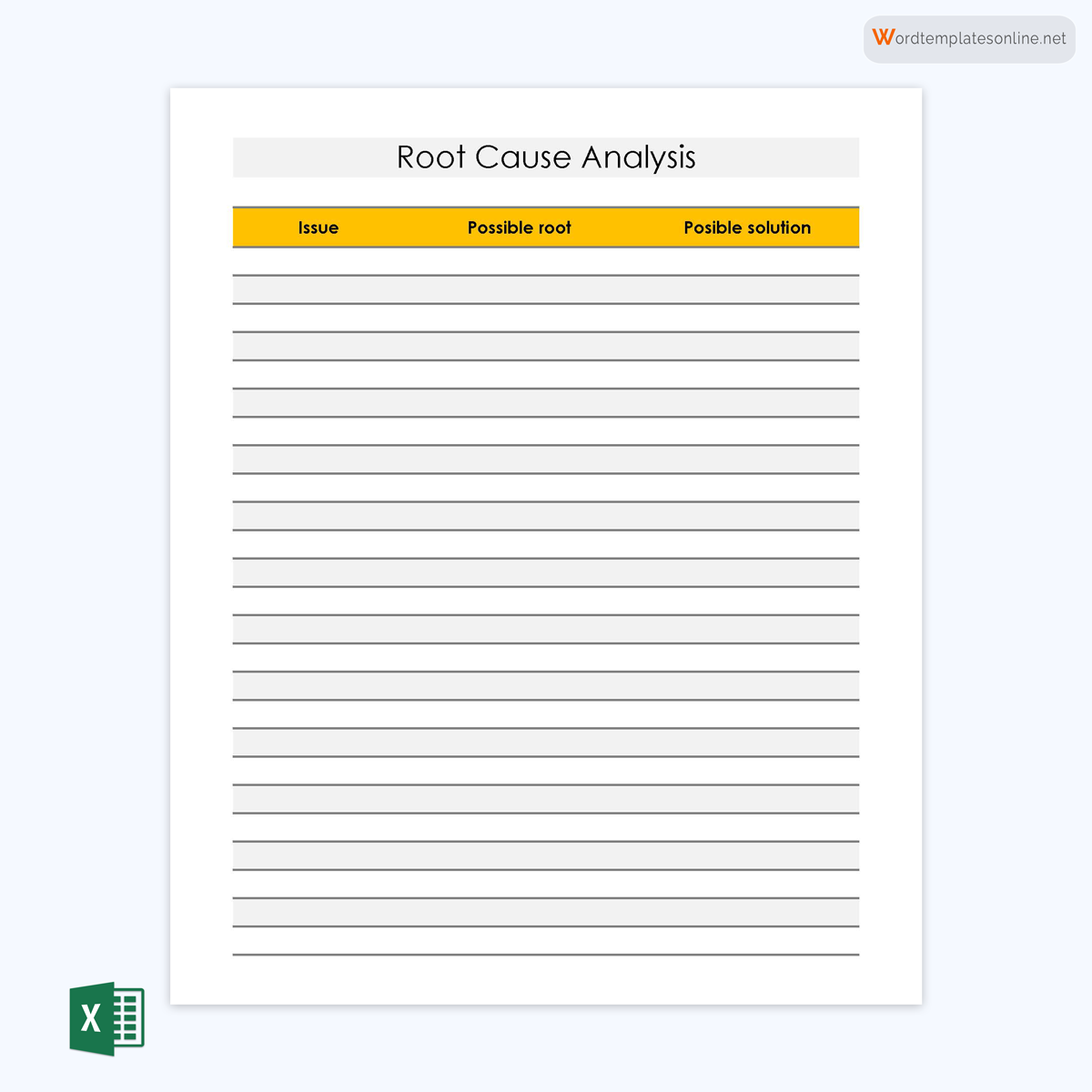
Types of Root Cause Analysis Template
You can use multiple types of templates to analyze the root cause of accidents or failures in systems and processes. Here are several types of templates you can find online and consider utilizing:
5 whys root cause analysis template
This report focuses on the 5 whys methodology. It prompts you to ask five “why” questions targeted to find the root cause(s) of a problem. Each answer should lead to the next subsequent why until an actual problem is identified.
Fishbone diagram root cause analysis template
This type of template is designed to utilize a fishbone diagram to identify the cause and effect of a problem. A fishbone or cause-and-effect diagram takes a fish skeleton-like diagram to narrow-down issues to their root causes. It employs mind mapping and brainstorming to trace where a problem originated.
Pareto chart root cause analysis template
Pareto analysis can be utilized to identify the root causes of various events and processes. The Pareto principle, or 80/20 rule, states that 20% of inputs should result in 80% of the outcome. This template is based on this approach and helps you micro-analyze a problem to identify probable causes.
Incident investigation root cause analysis template
This type of report enables you to find and resolve system-related issues. It prompts you to assess system-related factors, identify faults and develop solutions to prevent the defects from reoccurring.
Accident root cause analysis template
This type of template is focused on investigating the causes of accidents within an organization. It aims to identify events that led to the accident to occur. Such a report would be suited to investigate employee injuries, product failures, or property damage.
Joint commission root cause analysis template
Such a report is designed in accordance with the Joint Commission’s Framework for RCA and Action Plan. This joint commission framework prompts you to ask 24 questions to identify the stages in which an event occurred and collect important data during the investigation.
Software defect root cause analysis template
This RCA report is targeted to find defects within a software program. It outlines the steps to identify the defects and their sources. It also helps you formulate solutions on how to resolve the defects.
Factors to Consider When Customizing an RCA Template
You can customize a template to ensure your analysis is beneficial to your team and organization. Below are different things you should consider when modifying the report:
Industry regulations
If there are any industry-specific regulations that your RCA should comply with, always review published versions and incorporate them into your investigation. For example, in the healthcare industry, the Joint Commission requires organizations to conduct RCA for certain adverse events. Therefore, you can create templates that comply with the regulations stipulated for such events.
Organizational culture
Always review your organization’s culture and way of working when modifying the template to align with it. This would require you to analyze the company’s structure, size, and values. For example, if the organization is to be supervised by multiple personnel in the organizational structure, provide a comprehensive RCA suited for multiple departments and teams.
The complexity of the problem
The complexity of the problem will depend on the level of investigation. This also determines the factors and questions to be included in the report. In turn, this determines the type of template you will use for a RCA. For example, investigating a major accident will require a significantly in-depth RCA, which includes multiple factors, components, questions, and a detailed timeline. A template for investigating such events must thus be adequately detailed.
Types of problems
The nature of the problem will determine the type of template for the analysis. You can personalize your templates to suit the common problems within your organization. This would include problem-specific questions. For example, a template for investigating machine failure will differ from that for investigating an employee safety accident.
Data collection and analysis
You can modify the template based on the type of data collection and analyzing technique to be used. This guarantees that you can collect accurate data and conduct consistent analysis. As a result, a template may have sections for collecting relevant data, documenting observations, and analyzing trends.
Bottom Line
Root cause analysis, or RCA, is a technique used to solve problems by identifying the underlying causes and formulating corrective action plans. This is a way to improve processes within the organization. It is advisable to use a personalized template to ensure the analysis is suited for the event or problem in question. You can create your own template or download one online. Lastly, root cause analyses are used in multiple industries, such as healthcare and aviation. So, always review industry regulations because, in some cases, the RCA must comply with the set guidelines.







